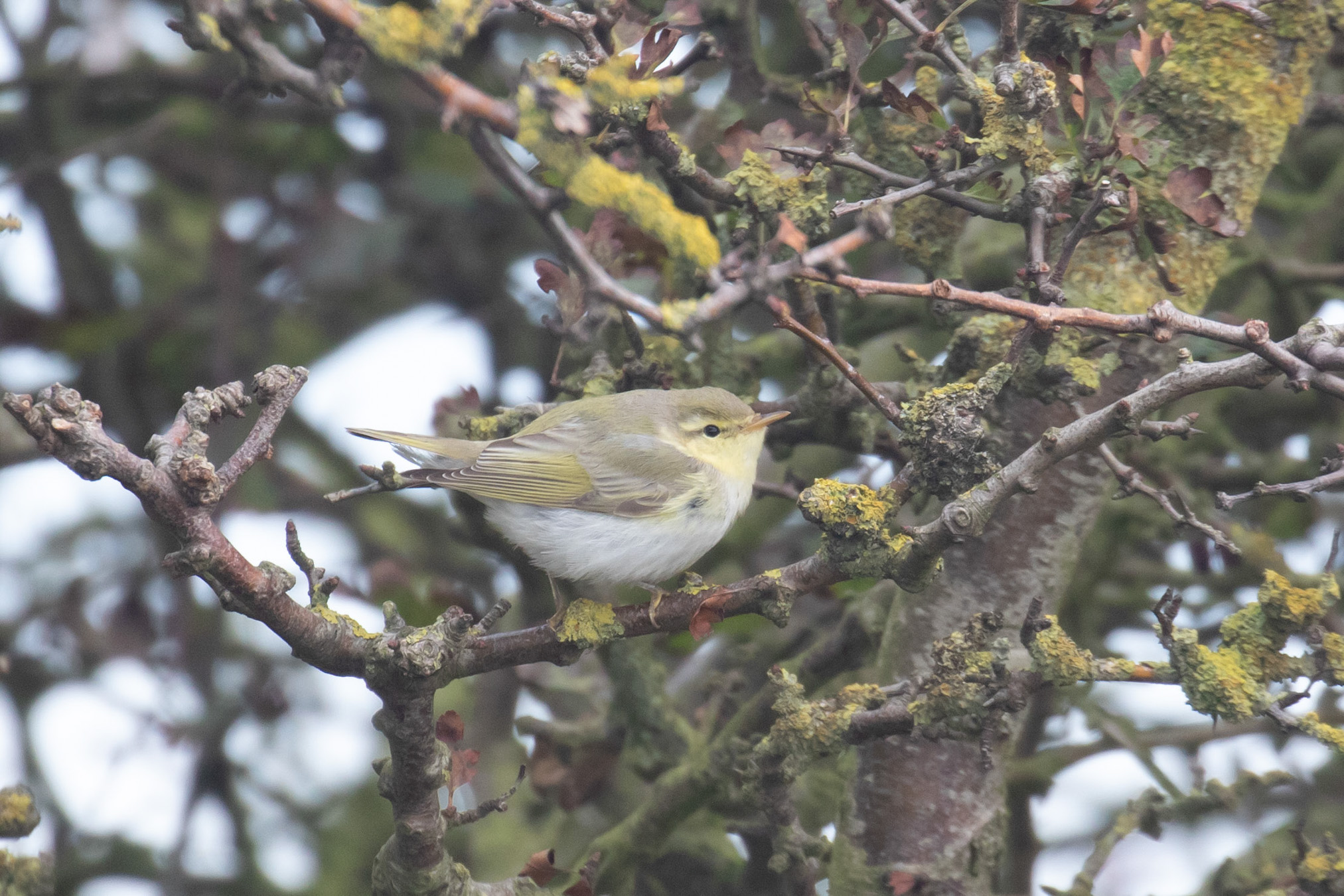Richard Campey, Andy Last and I were meant to be in Shetland this week. However, with our accommodation cancelling our booking two weeks ago due to COVID cases rising and it being illegal in Scotland for members of more than two households to meet indoors, the message from Shetland was clear: come back after the pandemic is over! Richard opted to stay at home in Norfolk, so Andy and I looked around for somewhere nearer where we could still get a taste of autumn migration. With easterly winds and rain forecast all day Saturday, we opted to spend Sunday and Monday at Spurn Point on the Yorkshire coast and expectations were high! At the last minute, Dave Lowe and Wayne Paes, both from Oxford, also decided to travel independently to Spurn and stay locally. We would see both of them in the field over the two days.
On Sunday morning, one of the two Red-flanked Bluetails that were found the day before, was still around Cliff Farm, intermittently dropping down to take insects from the lawn. It was beginning to attract a small crowd, so we did not linger.

Instead, we worked our way around the Kilnsea area, checking bushes, fencelines and the sky for migrant birds. The conditions were perfect and autumn migration was in full swing: there was a constant stream of thrushes and finches passing overhead. Song Thrushes were most numerous, nearly 1000 arrived on Saturday, followed by Redwings. In contrast, very few Blackbirds and hardly any Fieldfares were on the move. Small flocks of Chaffinches, Linnets and Goldfinches passed over all morning and the sound of calling Siskins overhead was ubiquitous.


Good birds came along regularly. We saw two Short-eared Owls, one roosting next to the Canal Path, the other sheltering from the wind behind a hedgerow:


Coming across good numbers of common migrants was a real treat. We saw a total of 3 Whinchat, but most places held Redstarts. It is always lovely to see Redstarts and was special to see Firetails and Bluetail on the same day:

There was a light scattering of Wheatears:

Mediterranean Gulls seem common at Spurn now, they were regular over the Humber:

This apporachable Golden Plover was on the path to Sammy’s Point:

The bushes there held a very late Wood Warbler, an unexpected surprise in October:

Siskins and Lesser Redpolls were everywhere at Sammy’s too, including birds feeding on the verges of the road at our feet:

On Saturday afternoon, we walked south, all the way down Spurn Point:

The numbers of migrant Robins on the Point was amazing. There were hundreds, virtually every moving bird would turn out to be a Robin:

After Robins, the commonest birds on the Point were Song Thrushes. The birds arriving on the Yorkshire coast were very different from mainland birds. They had cold grey mantles and a clean, white ground colour to the breast, which seemed to glow white on a grey day:


Warblers were represented by Chiffchaffs, Blackcaps, the occasional Willow Warbler, one Garden Warbler and one Yellow-browed Warbler.

Raptors seen were Kestrel, Sparrowhawk, Merlin and a fly-through Marsh Harrier, some of which were hunting the Chaffinches, Goldfinches, Siskin and Brambling in the bushes at the end of The Point.



Sunday was a quieter day for overhead migration, but we caught up with a couple of scarce birds. A mobile and elusive Red-breasted Flycatcher at Terminal Wood eventually showed itself, before flicking off through the wood again. The Barred Warbler, originally found by Dave Lowe 13 days ago but still present, could be glimpsed in Listening Dish Hedge:

I recorded 101 species over two days of superb autumn migration. The big find still eluded us, though one of my favourite moments took place in the Crown and Anchor car park on Sunday morning. We had all commented on how we had been expecting more Yellow-browed Warblers to be present, but as yet, we had not seen any. A heavy shower had passed through, followed by sunshine and then a rainbow:

I took the picture above before a movement in the tree on the right caught my eye. A Yellow-browed Warbler was feeding in the branches on the edge of the tree. I called to Dave “Yellow-browed Warbler”
“Where are you looking?” he replied.
I savoured my response: “At the end of the rainbow!” Without doubt, the first time I’ve used a rainbow as a point of reference. And at the end, a nice little pot of Siberian green and gold:


